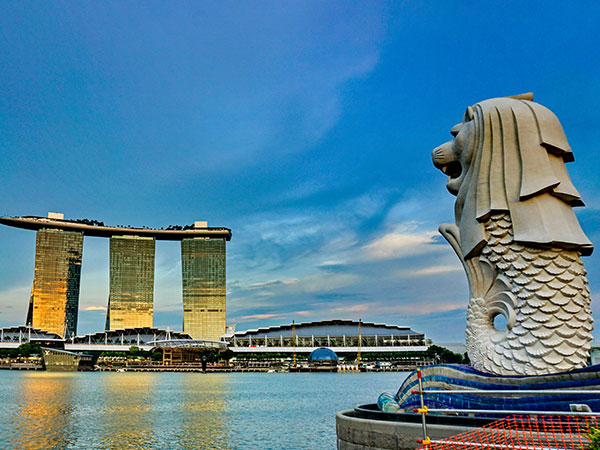



Canada is in North America, Canada is attractive for its high quality of life, robust economy, diverse culture, and natural beauty. It’s also a popular destination for international students and immigrants due to its welcoming environment and educational opportunities.
Canada is generally considered a good place to work and settle due to its strong economy, high quality of life, and welcoming environment for immigrants. Canada offers numerous job opportunities, particularly in sectors like technology, healthcare, and manufacturing. The country also boasts a high standard of living, excellent education system, and a safety-conscious culture.
In 2023, a total of 27.2 million trips were made to Canada by non-Canadian visitors, with 21.2 million trips by U.S. residents and 6.0 million by overseas visitors.
Permanent Residence (PR) programs in Canada allow individuals to immigrate and live permanently in the country, offering numerous benefits including the right to live and work anywhere in Canada, access to healthcare and education, and a pathway to citizenship. There are various routes to achieving PR, including those focused on economic immigration, family sponsorship, and refugee resettlement.
To obtain a Canadian Permanent Resident (PR) visa, you typically need to meet specific eligibility requirements, create an Express Entry profile, get a Comprehensive Ranking System (CRS) score, and potentially be nominated by a province. After receiving an Invitation to Apply (ITA), you’ll submit a complete PR application, undergo medical and background checks, and if approved, receive a Confirmation of Permanent Residence (COPR).
1. Right to Live and Work: PR holders can live and work anywhere in Canada, without being tied to a specific employer or province.
2. Access to Healthcare: Canada’s universal healthcare system is accessible to PR holders, providing medical care and services at little or no cost.
3. Free Education for Children: Children of PR holders can access free public education in Canada.
4. Social Security Benefits: PR holders are eligible for social security benefits like retirement pensions, disability benefits, and unemployment insurance.
5. Pathway to Citizenship: Obtaining PR is a crucial step towards becoming a Canadian citizen.
6. Family Sponsorship: PR holders can sponsor family members (spouse, children, etc.) to join them in Canada.
7. Freedom to Travel: PRs can easily travel within and outside Canada using their Permanent Resident Card.
To obtain a Permanent Resident (PR) visa in Canada, you typically need to apply through the Express Entry program or a Provincial Nominee Program (PNP). The Express Entry program uses a Comprehensive Ranking System (CRS) to evaluate applicants, while PNP programs require you to be nominated by a province or territory.
Gather Required Documents and Prepare Your Application:
1. Education Credentials Assessment (ECA)
2. Language Proficiency Tests
3. Work Experience Verification
4. Medical and Criminal Background Checks
To use the Express Entry system for a Canadian PR visa, you’ll first create a profile and submit it to the Express Entry pool. If your profile is eligible, you’ll be assigned a score based on the Comprehensive Ranking System (CRS), and you’ll be ranked alongside other candidates. If you’re one of the top-ranking candidates, you’ll receive an Invitation to Apply (ITA).
After receiving an ITA, you have 60 days to submit your complete permanent residence application, including required documents and fees.
If you qualify for a PR visa through the Express Entry program in Canada, you will first receive an Invitation to Apply (ITA). After receiving the ITA, you have 60 days to submit a complete application for permanent residence. If your application is approved, you’ll receive an electronic Confirmation of Permanent Residence (e-COPR).
Here’s a more detailed breakdown:
1. Express Entry Profile: You’ll create an online profile on the Immigration, Refugees and Citizenship Canada (IRCC) website and submit it to the Express Entry pool.
2. Comprehensive Ranking System (CRS): Your profile will be evaluated using the CRS, which assesses factors like age, education, language skills, and work experience.
3. Invitation to Apply (ITA): IRCC conducts draws, inviting the highest-ranking candidates to apply for permanent residence.
4. Application Submission: If invited, you’ll have 60 calendar days to respond to the ITA and submit a complete application.
5. Processing: IRCC aims to process permanent residence applications within six months.
6. Confirmation of Permanent Residence (e-COPR): Upon approval, you’ll receive an e-COPR in your PR portal.
7. Permanent Resident Card: You’ll need to provide a photo in the portal to initiate the process of receiving your permanent resident card, which will be mailed to you.
8. Permanent Resident Status: You can use your e-COPR to prove your permanent resident status in Canada and apply for government benefits and services.
Some of the popular PNP programs are:
Eligibility criteria for the PNP:
An applicant must score a minimum number of points to be able to apply for a PR visa. Here are the various criteria under which you can score points to meet the eligibility requirement:
Provincial Nominee Programs in Canada
| PROVINCE | CATEGORY / STREAM |
| Alberta | Express Entry Alberta Opportunity Stream Self-employed farmer stream |
| British Columbia | Skills Immigration Express Entry BC Entrepreneur immigration |
| Manitoba | Skilled Workers in Manitoba, International Education Stream, Skilled Workers Overseas |
| New Brunswick | Entrepreneurs, International graduates Skilled workers with employer support Skilled workers under EE stream |
| Newfoundland and Labrador | Express Entry Skilled workers International graduates Entrepreneurs |
| Nova Scotia | Express Entry Skilled workers Entrepreneurs |
| Ontario | Human Capital Priorities Stream |
| Prince Edward Island | Express Entry Entrepreneur International graduates |
| Saskatchewan | Express Entry Skilled worker Occupation In-Demand |
| North West Territories | Employer driven Business |
| Yukon | Foreign workers Business nominee |
Selection factors
SELECTION CRITERIA | MAXIMUM POINTS |
| Education | 25 |
Experience | 35 |
| Age | 10 |
Ability in French and/or English | 24 |
| Adaptability | 6 |
Total: | 100 |
Under the Self-Employed Persons Program, eligible occupations within Canada’s artistic, cultural and athletic fields include:
Professional Occupations in Art and Culture | |
| 5111 | Librarians |
5112 | Conservators and Curators |
| 5113 | Archivists |
5121 | Authors and Writers |
| 5122 | Editors |
5123 | Journalists |
| 5124 | Professional Occupations in Public Relations and Communications |
5125 | Translators, Terminologists and Interpreters |
| 5131 | Producers, Directors, Choreographers and Related Occupations |
5132 | Conductors, Composers and Arrangers |
| 5133 | Musicians and Singers |
5134 | Dancers |
| 5135 | Actors and Comedians |
5136 | Painters, Sculptors and Other Visual Artists |
Technical and Skilled Occupations in Art, Culture, Recreation and Sport | |
5211 | Library and Public Archive Technicians |
| 5212 | Technical Occupations Related to Museums and Art Galleries |
5221 | Photographers |
| 5222 | Film and Video Camera Operators |
5223 | Graphic Arts Technicians |
| 5224 | Broadcast Technicians |
5225 | Audio and Video Recording Technicians |
| 5226 | Other Technical and Co-ordinating Occupations in Motion Pictures, Broadcasting and the Performing Arts |
5227 | Support Occupations in Motion Pictures, Broadcasting and the Performing Arts |
| 5231 | Announcers and Other Broadcasters |
5232 | Other Performers |
| 5241 | Graphic Designers and Illustrators |
5242 | Interior Designers and Interior Decorators |
| 5243 | Theatre, Fashion, Exhibit and Other Creative Designers |
5244 | Artisans and Craftspersons |
| 5245 | Patternmakers – Textile, Leather and Fur Products |
5251 | Athletes |
| 5252 | Coaches |
5253 | Sports Officials and Referees |
| 5254 | Program Leaders and Instructors in Recreation, Sport and Fitness |
1. Valid Passport
2. Proof of Education
3. Language Test Results
4. Proof of Funds
5. Police Clearance Certificates
6. Medical Examination Report
7. Birth Certificate
8. Marriage Certificate
9. Divorce Certificate/Legal Separation Agreement
10. Job Offer (if applicable)
11. Provincial Nomination Certificate (if applicable)
12. Family Member Information
Right to Live, Work, and Study:
1. PR status allows individuals to live, work, and study anywhere in Canada.
2. They are free to move between provinces and territories.
3. There is no requirement to obtain separate work permits, allowing for flexibility in employment.
4. PR holders are treated as domestic students for educational purposes, potentially reducing tuition fees and increasing access to financial aid.
Access to Social Benefits:
1. PRs have access to the Canadian healthcare system, which provides essential medical services at little or no cost.
2. They can also access various social services and welfare benefits.
3. They can obtain a Social Insurance Number (SIN), which is required for working and accessing other government services.
4. PRs can apply for Canadian citizenship after meeting specific eligibility requirements.
Online Application:
1. Access the Portal: Go to the Permanent Residence Portal.
2. Account: If you don’t have one, create an account, otherwise, log in.
3. Select “PR Card Renewal”: Choose this option from the program options, as this is what you’re applying for.
4. Provide Information:
Documents Required:
1. Scanned PR Card: Scan both the front and back of your current PR card as a single PDF.
2. Other Documents: Depending on your situation, you may need to submit additional forms like Form 5444 (if applicable).
3. Payment:
1. Pay the Fee: Pay the application fee online through the portal using a credit or debit card.
2. Upload Proof of Payment: Upload a copy of your payment receipt.
4. Declaration:
1. Consent and Declaration: Provide your consent and declaration, which involves digitally signing the application.
5. Submission:
1. Complete Checklist: Check all necessary boxes on the application checklist, which you don’t need to print or sign.
2. Submit the Application: Once everything is complete, submit your application through the portal.
1. High Quality of Life: Canada consistently ranks high in quality of life rankings, thanks to factors like affordability, individual freedoms, inclusivity, and safety.
2. Strong Economy and Job Opportunities: Canada has a robust and growing economy, offering numerous job opportunities, particularly for skilled workers.
3. Welcoming and Diverse Society: Canada is known for its multiculturalism and welcoming attitude towards newcomers, fostering a sense of community and belonging.
4. Access to Education and Healthcare: Canada has a well-regarded education system and a universal healthcare system, providing residents with access to quality education and medical care.
5. Stable Political System: Canada’s political system is known for its stability and low corruption rates, ensuring a predictable and safe environment for living and working.
6. Affordable Living: While the cost of living in Canada can vary depending on the region, it’s generally considered more affordable than many other major countries.
Work in Canada is generally considered good due to a strong economy, diverse job market, and high quality of life. Factors like competitive salaries, benefits, and a universal healthcare system contribute to a positive working experience, Canada also has a welcoming attitude towards immigrants, providing further opportunities for those seeking work and a new life.
Here’s a more detailed look at why working in Canada is attractive:
1. High Salaries and Benefits:
Canada offers competitive salaries, and workers often receive comprehensive benefits packages, including health insurance, paid vacation, and parental leave, says Indeed.
2. Universal Healthcare:
Canadians have access to a free public healthcare system, reducing the financial burden associated with medical care, according to Quora.
3. Quality of Life:
Canada offers a high quality of life, characterized by low crime rates, excellent education, and a focus on work-life balance,
4. Diverse Job Market:
Canada has a diverse job market with opportunities in various sectors, including healthcare, engineering, technology, and more.
5. Immigrant-Friendly Policies:
Canada has policies in place to attract and support skilled workers, making it easier for individuals to immigrate and find employment.
There are numerous job opportunities in Canada for Indian professionals and students, particularly in fields like engineering, finance, healthcare, and technology. Canada’s job market is generally considered good, with many industries experiencing high demand for skilled workers.
1. Sales Associate
2. Customer Service Representative
3. Barista
4. Driver
5. Cleaners
6. Receptionist
7. Production Worker
8. General Labourer
9. Delivery Driver
10. Kitchen Helper
1. Healthcare
2. Information Technology
3. Skilled Trades
4. Engineering
5. Financial Auditors
6. Construction Managers Accountants
A Canada work permit visa is a legal document issued by Immigration, Refugees and Citizenship Canada (IRCC) that allows foreign nationals to work in Canada for a specified period. It enables individuals to take up employment in Canada but does not grant them permanent residency (PR). These permits are essential for foreign workers to legally work in Canada, even if their employer is not based in the country.
1. Purpose: To allow temporary foreign workers to work in Canada.
2. Duration: The permit is valid for a specific period, determined by the program and circumstances.
3. Types: There are different types of work permits, including open work permits (allowing work for any employer) and employer-specific work permits (allowing work for only one employer).
Eligibility: Most applicants require a Canadian job offer supported by a Labour Market Impact Assessment (LMIA), though there are exceptions, such as recent graduates from Canadian Designated Learning Institutions (DLIs) or spouses of work or study permit holders.
1. Job Offer: A valid job offer from a Canadian employer is essential for most work permits.
2. Qualifications: You must demonstrate that you meet the job’s requirements, including education, work experience, and any required licenses or certifications.
3. Intent to Leave: You need to convince the Canadian immigration officials that you intend to leave Canada once your work permit expires.
4. Financial Support: You must demonstrate that you have sufficient funds to support yourself and any dependents during your stay in Canada.
5. Health and Criminality: You must meet basic health and criminality requirements to be eligible for a work permit.
Basic Requirements
1. Valid Passport
2. Completed Application Form
3. Job Offer Letter/Employment Contract
4. Proof of Funds
Supporting Documents
1. Proof of Qualifications
2. LMIA (or Proof of LMIA Exemption)
3. Police Certificates
4. Language Proficiency Test Results
5. Medical Examination
6. Photographs
There are two types of work permits given by Canadian authorities- open work permit and an employer-specific work permit. An open work permit basically allows you to work for any employer. This visa is not job-specific, so applicants do not require the Labor Market Impact Assessment (LMIA) or an offer letter from an employer who has paid the compliance fee.
With an open work permit you can work for any employer in Canada except for those companies that do not comply with labor requirements or are involved in services like escort services, erotic massage or exotic dancing.
The employer-specific work permit as the name suggests is a permit that allows you to work for a specific employer.
While the employer-specific work permit pertains to a single employer, the open work permit can come with certain conditions which will be written on it. These include:
Holders of the following visas can apply for an Open Work Permit:
Conditions for the open work permit:
There are two types of work permits given by Canadian authorities- open work permit and an employer specific work permit. An open work permit basically allows you to work for any employer. This visa is not job-specific, so applicants do not require the Labor Market Impact Assessment (LMIA) or an offer letter from an employer who has paid the compliance fee.
With an open work permit you can work for any employer in Canada except for those companies that do not comply with labor requirements or are involved in services like escort services, erotic massage or exotic dancing.
The employer specific work permit as the name suggests is a permit that allows you to work for a specific employer.
While the employer specific work permit pertains to a single employer, the open work permit can come with certain conditions which will be written on it. These include:
Several types of jobs in Canada do not require a work permit for foreign nationals. These include:
1. Business Visitors
2. Foreign Representatives
3. Athletes and Team Members
4. Aviation Inspectors
5. News Reporters and Media Crews
6. On-Campus Work
7. Performing Artists
8. Emergency Service Providers
9. Clergy
10. Convention Organizers
11. Crew Members
Irrespective of the work permit you are applying for, there are certain eligibility requirements you must meet, these include:
In order to apply for a work permit from inside Canada, you must meet certain conditions. These include:
A dependent work visa in Canada allows the spouses or partners, and in some cases, dependent children of foreign workers or students, to obtain a work permit so they can work while their primary family member is in Canada. This visa is essentially a type of open work permit, meaning it allows the dependent to work for any employer in Canada, within the scope of the permit’s conditions, without needing a specific job offer.
Canada, a dependent visa allows individuals to sponsor specific family members to live with them. These can include ;
1. Spouse or Common-law partner:
This includes legally married partners and those in a recognized common-law relationship.
2. Dependent Children:
This generally refers to children under the age of 22 who are not yet married and are financially dependent on their parents. There are exceptions for children over 22 who are dependent due to a disability or other circumstances.
3. Parents and Grandparents:
In some cases, parents and grandparents can be included on a family sponsorship application.
1. Valid Passport
2. Application Forms
3. Proof of Relationship
4. Identification Documents
5. Financial Support
6. Police Certificates
7. Medical Examination
can help – fill in your details and we’ll call you back.



